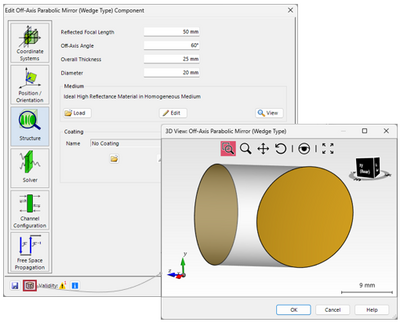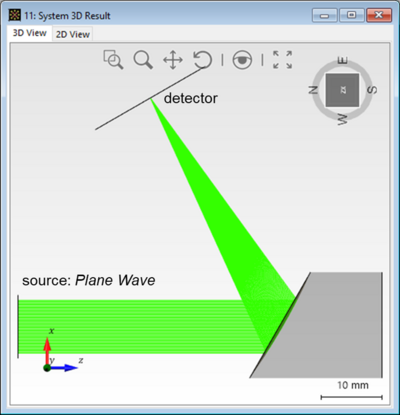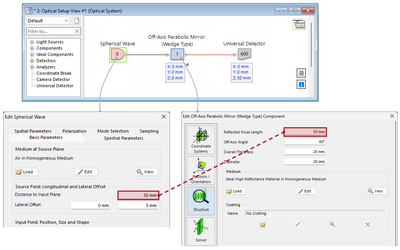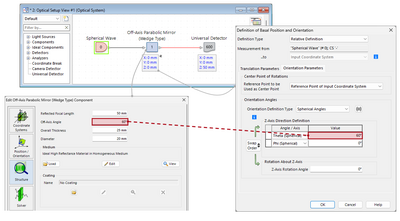Configuration of Off-Axis Parabolic Mirror for Collimation / Focusing
Focusing & Collimation with Off-Axis Parabolic Mirror (Wedge Type)
The Off-Axis Parabolic Mirror (Wedge Type), by definition, only works in reflection. Because of how the frames of reference of this component are defined, when the mirror is being used for focusing, entering simply the focal length of the mirror as the z coordinate of the subsequent detector directly places the detector in focus:
However, also for this very reason, attempting to use the mirror for collimation requires a few extra steps in order to get all the elements properly aligned. The aim is to get the emitting point of a Spherical Wave source to coincide with the position of the focus of the mirror. There are two different aspects we need to take into account:
- Because the emitting point of a point source constitutes a mathematical singularity, we cannot define the Input Plane of our source directly at the emitting point. The distance between the emitting point and the plane where the electric field is defined can be configured inside the Spherical Wave and, together with the Diameter of the aperture, will define the numerical aperture of the source in question.
The default rotation of the coordinate system in the Off-Axis Parabolic Mirror (Wedge Type) places the focus along the z axis in reflection. In order to rotate the focus position back to lie along the z axis as coming from the source, we need to rotate the mirror a spherical theta angle equal to the off-axis angle beta.



